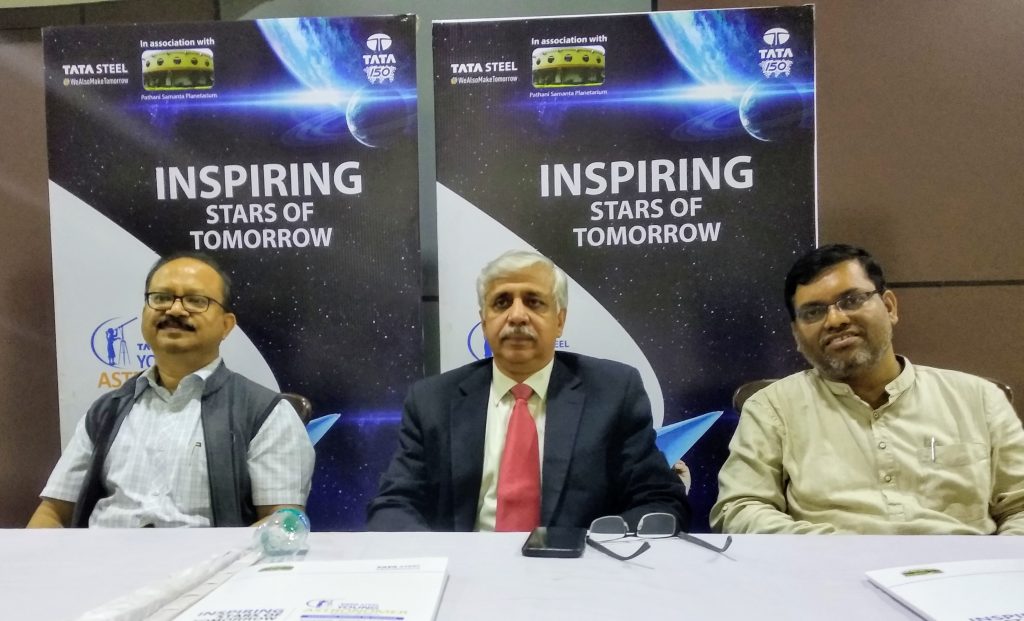Twenty students from Odisha have been chosen to visit ISRO. Prioritising the study of astrophysics,
Dipti Ranjan Das of Orissa POST interacted with leading astronomers and a corporate expert who spoke about emerging career options, corporate facilitation and issues related to the same field. The experts are:
Dr Anand Hota, founder-director of Mumbai-based RAD@Home, Astronomy Collaboratory, who discovered SPECA – the black hole galaxy system from the largest telescope in the world, Giant Meterwave Radio Telescope; Tarun Souradeep, senior professor, Inter University Centre of Astronomy and Astrophysics, Pune, and project coordinator for LIGO-India mega-science project; and Chanakya Chaudhary, vice-president, Corporate Services, TATA Steel. Excerpts from the interview:
What is the concept of e-astronomer?
HOTA: E-astronomers are basically trained citizen scientists in astronomy. These young astronomy enthusiasts are trained to become professional astronomers free of cost and are motivated to discover something new using our GMRT. Any bachelors in science can be a part of this project sitting at home. We started this programme five years back and the response that we have been getting is overwhelming.
How does the training procedure for e-astronomer function?
HOTA: Different research institutes offer training free of cost for seven days using GMRT data. After the training, they continue to learn and discuss with us from home via e-classes. These classes are conducted three hours a week. That’s how they continue researching and become co-authors in research papers and co-investigators in the GMRT research proposal. More than a dozen out 140 students trained by us are doing research work abroad in space science projects. Basically, we encourage people’s participation in this field.
What is Tata Steel’s initiative for students as far as astronomy is concerned?
CHAUDHARY: We have been encouraging the study of astronomy in Odisha for last 12-years. This year, over a period of six months, we reached 63,000 students from 30 districts, over 300+ schools and, based on a competition, we selected the top 20 to visit ISRO headquarters next year. The 20 students were also awarded by the Chief Minister. In the last 12 years, we have taken 240 students to ISRO and have been successful in enhancing their interest in this field. Tata Steel truly believes in shaping the minds of youngsters.
How do corporates facilitate science especially astronomy?
CHAUDHARY: Today, space research has become mega projects involving a lot of expensive instruments and gadgets. It is very hard for research institutes to afford such massive expenses and this is where the corporates come into action. We invest in ideas and discoveries. During the making of GMRT, Tata was least concerned about investment. We aimed at making a world class telescope in less than three years. The success of GMRT has generated employment, besides facilitating space research.
How would you explain that 36% of NASA’s employees are Indians?
SOURADEEP: Clearly, there is lack of challenges and infrastructural support in India. A person won’t have to work outside the county if the same amount of opportunity is available here. Everyone likes to stay in their respective comfort zones, but unfortunately India has a long way to go when it comes to astronomy research. And, secondly, when the learning is more, one ventures out of his comfort zone.
Could this be called ‘brain drain’?
SOURADEEP: I don’t believe it is brain drain. What could be better than the entire world getting to use our brain! Only when we let them venture out of the country, we can take the pride in being Indian at a global level. Anyway, there is an old saying “Science has no boundary”.
What exactly is lacking in this country as far as astronomy is concerned?
SOURADEEP: Astronomy is a discipline; it is an assembly of skills and ideas. For me, what is lacking in the country is the fact that we don’t work together. There are big players, corporate houses, government research, but all of them function differently. It’s only by working together instead of working like different teams we can take a positive step towards science as a whole. Gone are those days when scientists used to build machines solely. The time has come where machines have become so big that we need the help of industrialists, government and media. Collaboration is the future of science.
